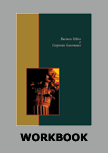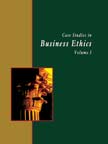Boeing's Unethical Practices




|
|
ICMR HOME | Case Studies Collection
Case Details:
Case Code : BECG037
Case Length : 12 Pages
Period : 1997 - 2004
Pub. Date : 2004
Teaching Note : Available
Organization : Boeing
Industry : Aerospace
Countries : USA
To download Boeing's Unethical Practices case study (Case Code:
BECG037) click on the button below, and select the case from the list of available cases:

Price:
For delivery in electronic format: Rs. 300;
For delivery through courier (within India): Rs. 300 + Rs. 25 for Shipping & Handling Charges
»
Business Ethics Case Studies
» Case Studies Collection
» ICMR Home
» Short Case Studies
» View Detailed Pricing Info
» How To Order This Case
» Business Case Studies
» Case Studies by Area
» Case Studies by Industry
» Case Studies by Company

Please note:
This case study was compiled from published sources, and is intended to be used as a basis for class discussion. It is not intended to illustrate either effective or ineffective handling of a management situation. Nor is it a primary information source.
|
|
<< Previous
Background NoteThe history of Boeing dates back to 1916 when William Boeing (William) and George Westervelt (Westervelt) incorporated their airplane manufacturing business as the Pacific Aero Products Company. The company's name was changed to Boeing in 1917.
Boeing began by manufacturing aircrafts for the US military during the First
World War.
|
In 1922, Edgar Scott became the company's president and during his tenure the navy awarded Boeing a contract to build a primary trainer. In 1927, the Model 40A mail plane won the US Post Office contract to deliver mail between San Francisco and Chicago. In the same year, Boeing Air Transport (BAT) was formed to run the new airmail services. BAT also trained pilots, set up airfields and provided maintenance staff for the new service. After the Second World War, Boeing shifted its focus from the defense industry to commercial jets. In 1952, Boeing launched its first commercial jet, the Boeing 707, a short-range jet. In 1960, William M. Allen (Allen) became the company's CEO. The same year, Boeing began manufacturing its first jumbo jet - the Boeing 747.
|
|
In 1962, Boeing manufactured the Air Force One, the official airplane of the US President. In late 1969, Boeing entered the Spacecraft manufacturing business by contributing to the Apollo program.
|
|
After Airbus Industrie6 was formed in 1970, Boeing's market share (70% in the early 1970s) began to decline. In the mid-1970s, Boeing launched long-range planes (the 757 and the 767). By the mid-1980s, Boeing extended its presence in the consumer electronics business through joint ventures, mergers and subcontracting. In 1991, Boeing completed the manufacture of the 727 and the 737, both short-range aircraft. In 1992, Boeing's efforts were directed more towards the development of the 777 wide body twinjet. In October 1994, the company launched the new 737 series, the 737-800. In the mid-1990s, Boeing's revenues plunged and it had to retrench around 9,300 employees due to the economic slowdown. Boeing's employees also went on a 10-week strike in the fourth quarter of 1995... |
Excerpts >>
|
|





